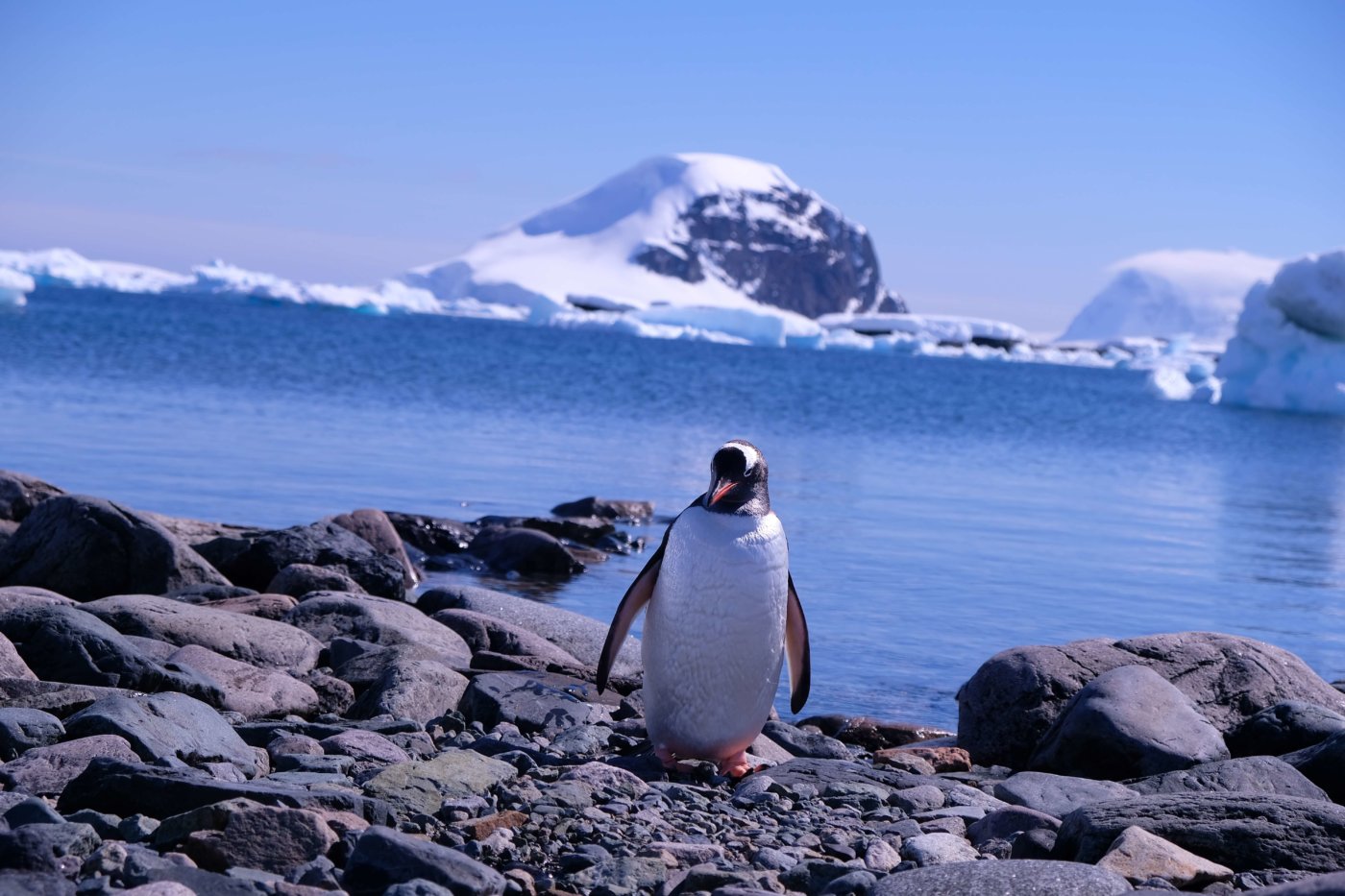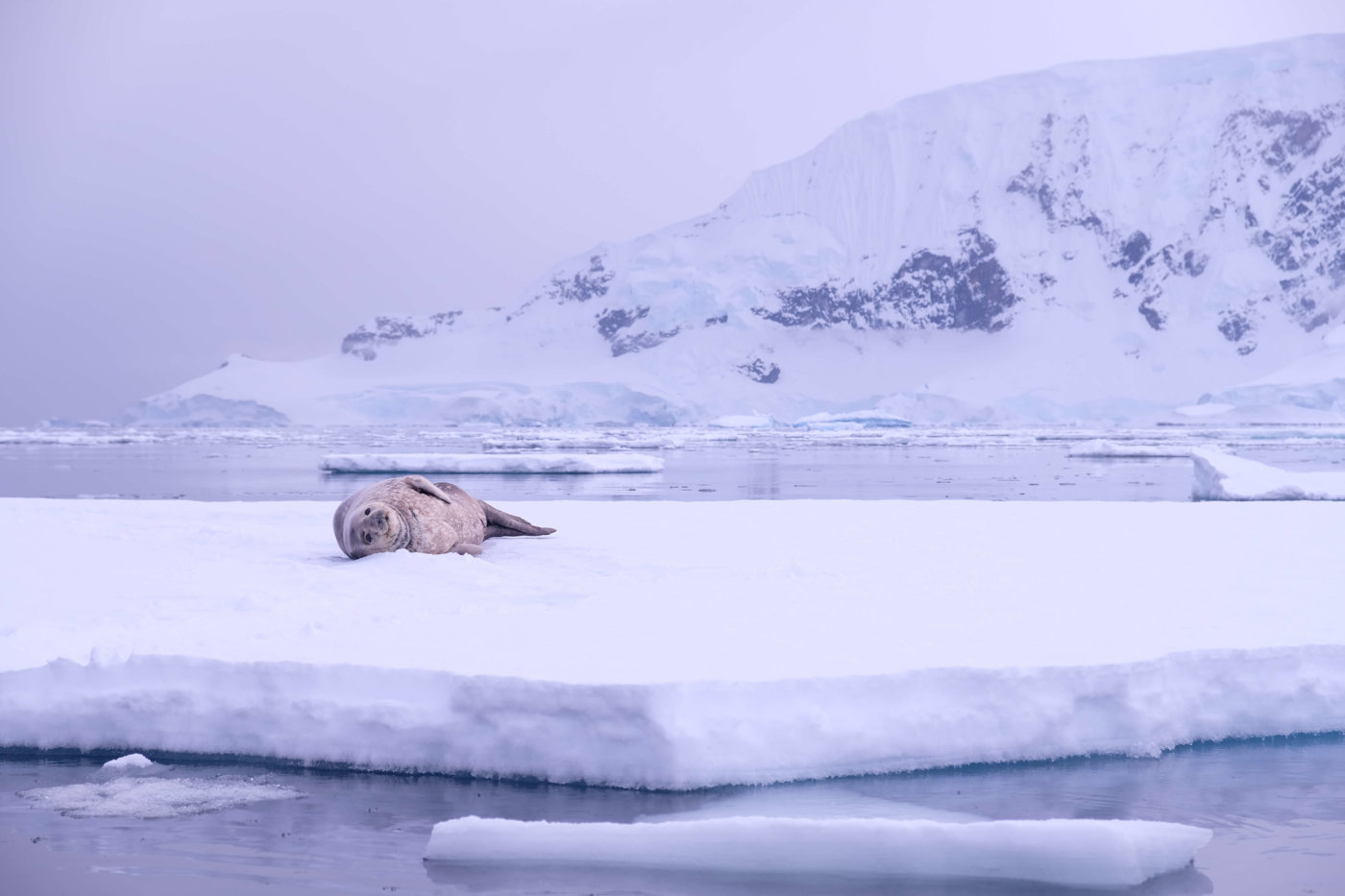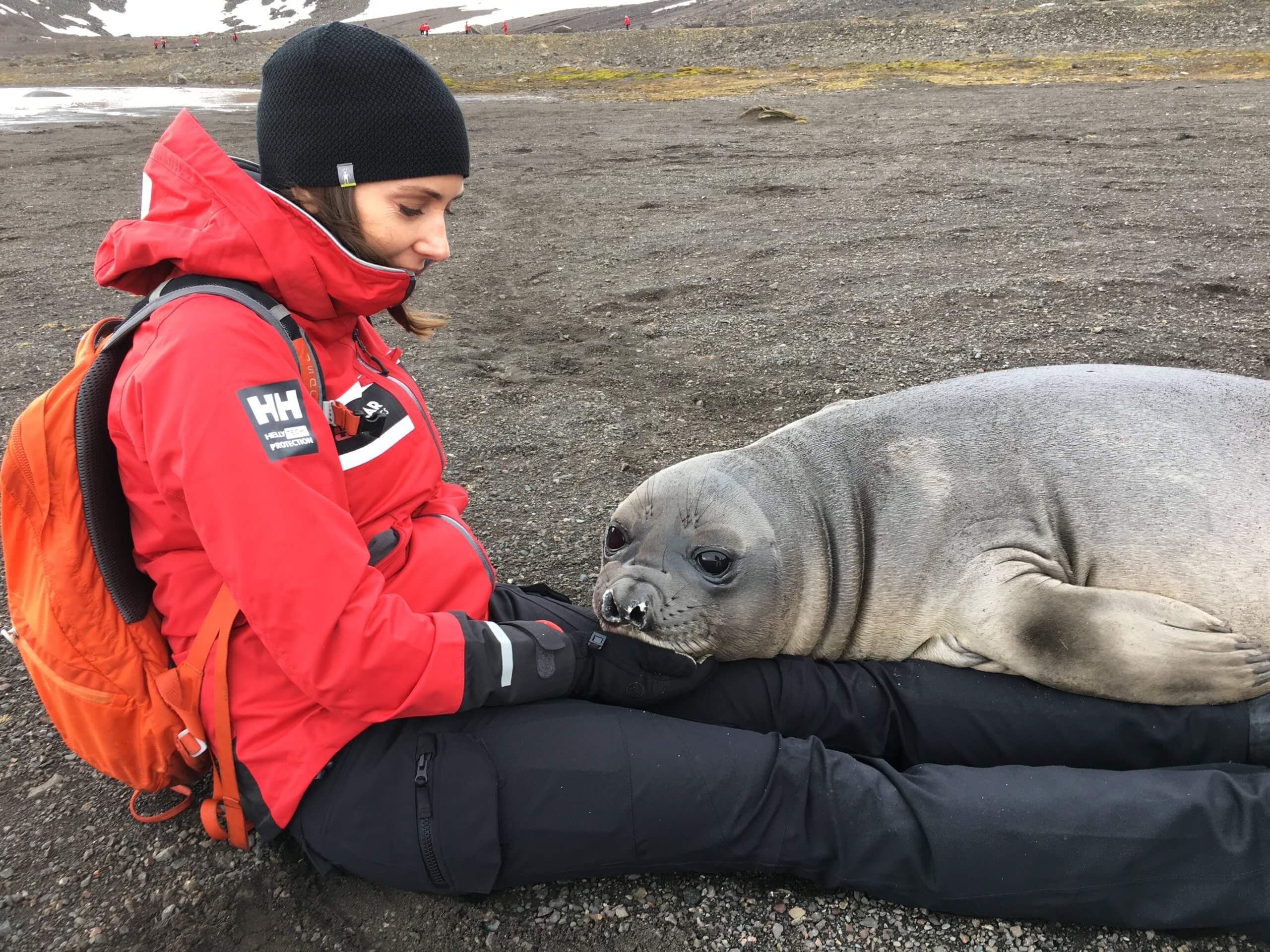By Sarah Sekula, published in USA TODAY // photos by Leah Murr
ANTARCTICA — It’s 10:30 a.m. on Danco Island, and it’s clearly time for the penguins to make the daily trek to the icy water. As they waddle down the snow-covered mountain, a group of visitors is strategically perched on rocks at the end of the penguin highway, a well-worn trail allowing for a single-file parade.
Minutes later, the first Gentoo shows up. Its fur-like feathers glisten in the sunlight. Close behind are four dozen of its web-footed cohorts. Step after clumsy step, they reach the highway’s end which gives way to pebbles, boulders and glassy water. One by one they take unsteady hops from rock to rock.
Necks down. Tails up. Wings back.
One plunges in and out of the water in fine torpedo-like fashion. Another stands just beyond the shoreline and raises its beak to the sky, letting out a string of squawks. A handful of neighbors do the same in what becomes an impressive penguin choir of guttural gurgles and sounds reminiscent of squeaky toys.
“There’s no land-based predators, so these penguins are really curious of us,” says Martin Garwood, a penguinologist aboard Polar Latitudes, the ship that shuttled us to the elusive seventh continent. “They’re not scared of humans; they just go about their day, and you get to be a part of it.”
That said, the Gentoos seem to be in no particular rush. We aren’t either. That’s the thing about Antarctica: time seems to stand still. The dramatic landscapes and up-close animal encounters reel you in; your job is to sit back, watch and listen.
The last frontier
Only an estimated 43,855 people will visit the great white continent during the 2016-2017 season, according to the International Association of Antarctica Tour Operators. Tourism there is still relatively young. In fact, 2016 marks only the 50th anniversary of organized tourism to the region.
“As travel in general gets more accessible, people want to go farther,” says Jonathan Goldsmith, a polar-region specialist with Audley Travel, a company that creates customized itineraries. “Trips to Antarctica are on the rise because tours are more available at a wider range of price points than ever before.
Of course, penguins aren’t the only draw. Antarctica’s chilly waters are filled with crabeater seals, orcas and humpback whales. Overhead, it’s easy to spot fast-flying petrels, Antarctic terns and albatrosses with wingspans of up to 11 feet.
Not to mention, the fascinating history. A visit to Antarctica will have you following in the footsteps of adventurers who won fame during the Heroic Age of Exploration. Among the list of brave souls was Ernest Shackleton. And 2017 marks the 100th anniversary of the end of his Endurance Expedition (1914 – 1917). When his ship was demolished, he left his crew on Elephant Island and traveled 800 miles in a lifeboat to find help. He did not lose a single crew member.
“Remoteness, vast open icy landscapes, unblemished nature and 24 hours of sunlight are all notions that capture a traveler’s attention and desire to visit Antarctica,” Goldsmith says.
In-your-face wildlife
On an afternoon excursion to Hannah Point, we meet gregarious elephant seals and their pups, or weaners as they are called.
“Go get some weaner love,” says Hannah Lawson, our expedition leader.
We enthusiastically hop out of the Zodiac. A male elephant seal, who likely weighs in at least 5,000 pounds, makes belching noises in the distance. Its distinctive snout flops to and fro as it tosses its head in a sign of dominance. Closer to shore, two young males rise up and begin slamming each other’s chests.
Our view, however, zeroes in on a group of seal pups. With oversized almond-shaped eyes they stare inquisitively as we sit down. And just a few minutes later, we discover what weaner love is. One pup caterpillars its way toward my sister, lays its head on her boot and makes a sneezing noise.
My sister imitates the sneeze, and it takes that as a cue to inch closer. And closer. Until it successfully snuggles right next to her. Its head lifts up just a foot away from her face and attempts to nibble her backpack strap.
Luckily, I’m not left out of the snuggle fest. Weaner number 2 makes it’s way onto my outstretched legs. Even though its likely about 30 days old, it already weighs 300 pounds.
Later on board the Hebridean Sky, which has specialized in small-ship excursions to Antarctica since 2010, Lawson reminds us there are rules against approaching the wildlife. However, there is no rule against wildlife approaching the curious-looking tourists.



